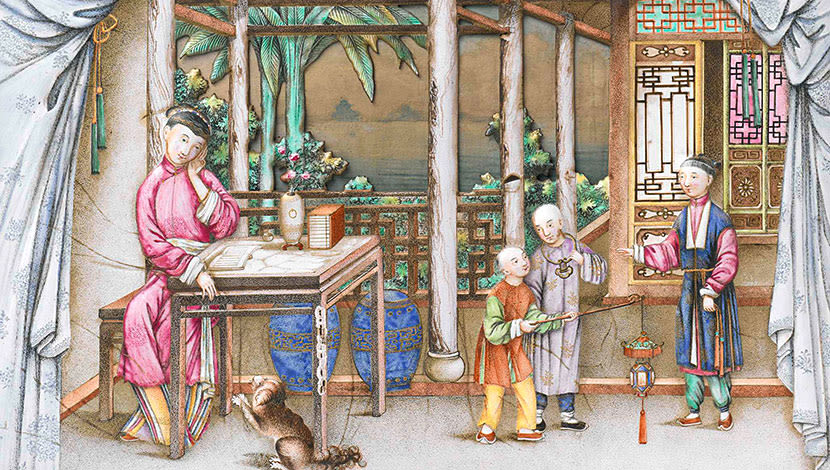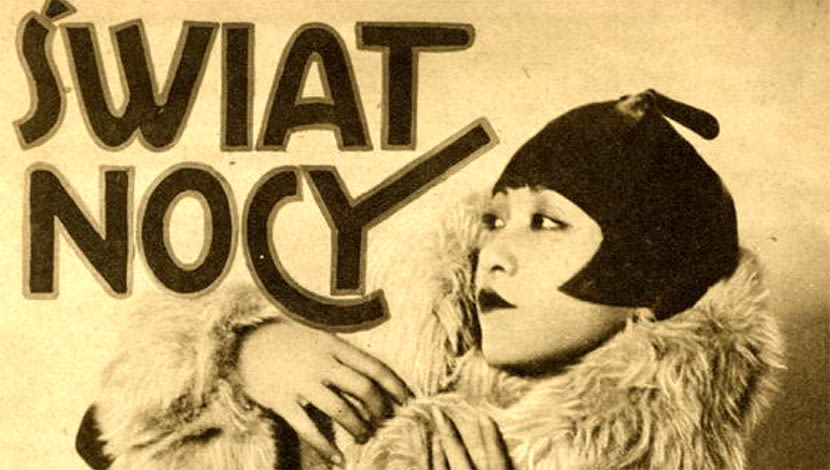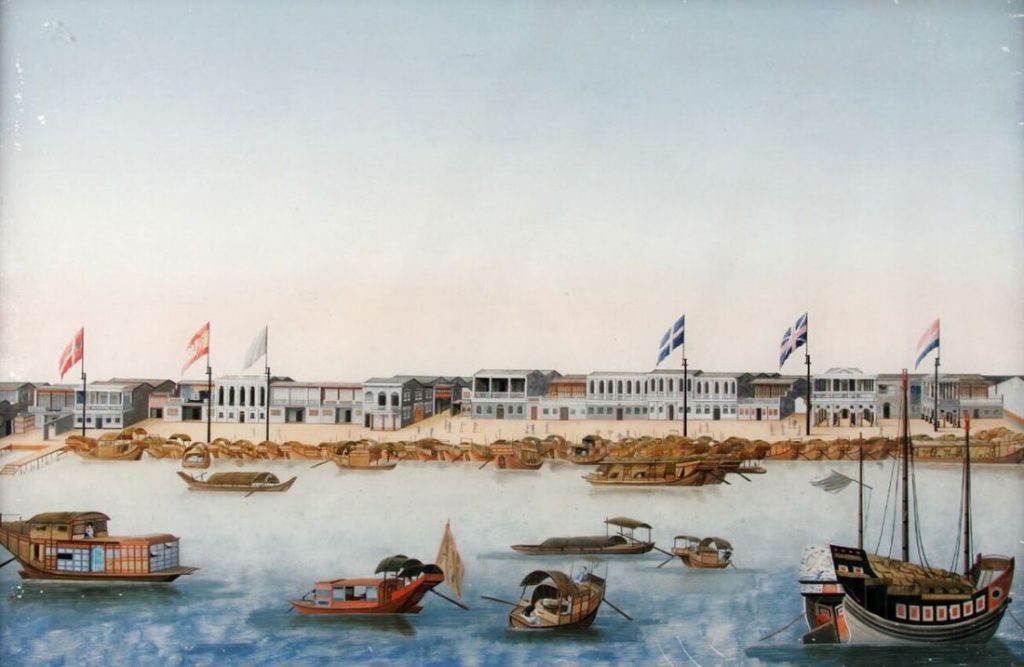Over two centuries ago, Chinese craftsmen used to produce a very peculiar kind of paintings expressely intended to be sold as souvenir for Westerners, with a range of subjects going from flowers, animals and landscapes, to scenes of daily life and processes of manufacturing local products like tea or silk. These depictions gave foreigners a taste of China and answered to the European taste for exoticism, so that they soon became very popular in Europe and a much lucrative trade.
Most of these paintings were brushed on pith paper: a cheap, spongy material made with the earth of a shrub native from southern China, and because of the nature of the paper, the paintings were very fragile. Most of these paintings were made by a team in a studio. Painters used watercolour or gouache (oil paintings were less common), producing vividly colourful impressions of China. Because these export paintings were generally made by craftsmen and not artists, they weren’t considered to be an art form by the Chinese, unlike calligraphy or ink paintings. This may be the cause for it taking such a long time before Chinese export paintings became a serious object of historical and artistic study.
Read the full story of the Chinese export paintings and enjoy a nice selection of images from Europeana in the blog authored by Julien Ménabréaz in The quayside at Canton, 18th-19th century, CC-BY-SA Nationaal Museum van Wereldculturen via Europeana.
PAGODE – Europeana China is co-financed by the Connecting Europe Facility Programme of the European Union, under GA n. INEA/CEF/ICT/A2019/1931839



